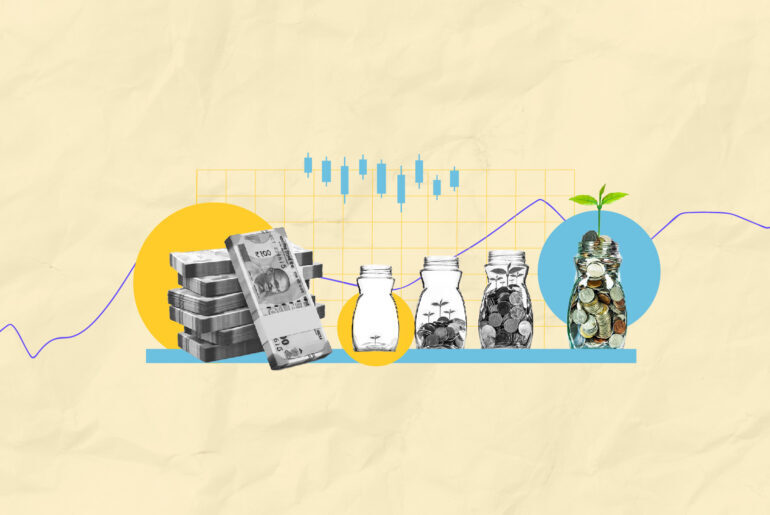Last Updated on May 24, 2022 by Aradhana Gotur
On-balance volume is a technical indicator that relates the market price of a security with the volume of trade being effected on the market. According to the basic theory of volume, as developed by Charles Dow, the volume of trades should rise in the direction of the trend. This implies that during an uptrend, the volume would rise along with the rising price, and in a downtrend, the volume would rise when the price goes down. This rising volume confirms the quality of the trend.
With time, as more and more research came into the subject, the theory of on-balance volume (OBV) was developed that soon became an indicator in the technical analysis of securities.
Table of Contents
What is on balance volume (OBV)?
On balance volume measures the buying and selling pressure on a stock on a cumulative basis which subtracts volume on days the market trends down and adds volume on the uptrend days. People often use OBV to confirm price trends and also look for divergence between price and OBV.
On balance volume was developed by Joe Granville based on Charles Dow’s Volume Theory, and it is one of the first indicators to measure positive and negative volume flow.
How is OBV calculated?
The OBV line is simply a running total of positive and negative volumes. A period’s volume is positive when the close is above the prior close and is negative when the close is below the prior close.
There are three rules implemented when calculating the OBV. They are:
1. If today’s closing price is higher than yesterday’s closing price, then:
current OBV = previous OBV + today’s volume
2. If today’s closing price is lower than yesterday’s closing price, then:
current OBV = previous OBV – today’s volume
3. If today’s closing price equals yesterday’s closing price, then:
current OBV = previous OBV
What does OBV indicate?
The theory behind OBV is based on the distinction between smart money – namely, institutional investors – and retail investors. As mutual funds and pension funds begin to buy into an issue that retail investors are selling, the volume may increase even as the price remains relatively level. Eventually, volume drives the price upward. At that point, larger investors begin to sell, and smaller investors begin buying.
Despite being plotted on a price chart and measured numerically, the actual individual quantitative value of OBV is not relevant. The indicator itself is cumulative, meaning the real number value of OBV arbitrarily depends on the start date, while the time interval remains fixed by a dedicated starting point.
Instead, traders and analysts look to the nature of OBV movements over time; the slope of the OBV line carries all of the weight of the analysis. Analysts look to volume numbers on the OBV to track large, institutional investors. They treat divergences between volume and price as a synonym of the relationship between “smart money” and the disparate masses, hoping to showcase opportunities for buying against incorrect prevailing trends. For example, institutional money may drive up the price of an asset, then sell after other investors jump on the bandwagon.
Limitations of OBV
One limitation of OBV is that it is a leading indicator, meaning that it may produce predictions, but there is little it can say about what has happened in terms of the signals it produces. Because of this, it is prone to produce false signals. It can, therefore, be balanced by lagging indicators. Add a moving average line to the OBV to look for OBV line breakouts; you can confirm a breakout in the price if the OBV indicator makes a concurrent breakout.
Another note of caution in using the OBV is that a large spike in volume on a single day can throw off the indicator for quite a while. For instance, a surprise earnings announcement, being added or removed from an index, or massive institutional block trades can cause the indicator to spike or plummet, but the spike in volume may not be indicative of a trend.
An OBV is a technical indicator that helps ascertain a relationship between the share price and volumes. When OBV and price both follow the same direction, regardless of the trend, we can draw a trend line in price as well as in volume to watch for pattern similarities. It helps find the divergence in thought process between market stakeholders, who are institutional investors and retail investors, and may possibly indicate towards buy or sell signals. OBV should always be used in the daily chart in correlation with the closing chart.
A trend line can be drawn to watch for pattern similarities, regardless of the ongoing trend, if OBV and price are following the same direction. Click To Tweet



